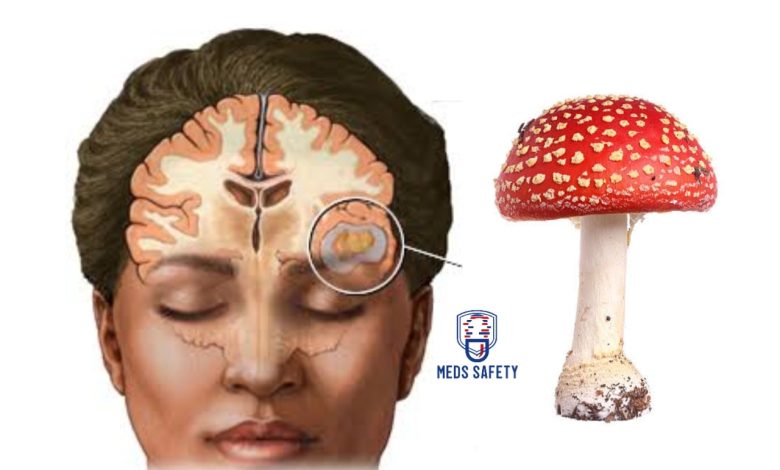How Psilocybin in Magic Mushroom Help With Migraines

Migraines are recurring headaches known for their intense and often debilitating nature. These headaches are often accompanied by a range of symptoms that can significantly impact an individual’s well-being. They are classified as a neurological disorder and are thought to arise from a combination of genetic predisposition, environmental factors, and neurological imbalances.
The hallmark of a migraine is the pain it brings. Typically, this pain is described as throbbing or pulsating and is usually felt on one side of the head. The severity of the pain can vary from moderate to severe and can last for hours or even days. What distinguishes migraines from regular headaches is the presence of additional symptoms. These can include sensitivity to light and sound, nausea, vomiting, and sometimes visual disturbances referred to as “auras.” Auras can manifest as various visual disturbances, such as flashing lights or zigzag lines.
Migraines can occur in several phases. Some individuals experience a prodrome phase, characterized by subtle warning signs like mood changes or food cravings, a day or two before the actual migraine attack. Not everyone experiences an aura, but for those who do, it often occurs just before or during the headache phase. The headache itself is the most intense part, often accompanied by the distinctive pain and other symptoms mentioned earlier. After the headache subsides, a postdrome phase may follow, leaving individuals feeling exhausted, confused, and sensitive to stimuli.
Triggers for migraines are diverse and can include factors such as certain foods, hormonal changes, stress, lack of sleep, and environmental changes. Due to the complexity of their causes, pinpointing triggers can be challenging. Migraines are relatively common, affecting around 12-15% of the global population. They are more prevalent in women than men and tend to begin during adolescence or young adulthood.
While there is no cure for migraines, various treatments are available to manage and mitigate their impact. In this article, we shall be looking at how research is helping to unveil the hidden potentials of psilocybin in the management of migraines.
What is psilocybin?
Psilocybin is a naturally occurring psychedelic compound found in certain species of mushrooms, often referred to as “magic” mushrooms or psychedelic mushrooms. When ingested, psilocybin is metabolized in the body to produce psilocin, which is the primary active compound responsible for its hallucinogenic effects. These effects include altered perceptions, sensory experiences, changes in thought patterns, and shifts in mood and consciousness.
Psilocybin has a long history of use in various cultures for spiritual, religious, and shamanic purposes. It has been consumed for its potential to induce altered states of consciousness and facilitate mystical or transcendental experiences. In modern times, psilocybin gained popularity in the 20th century as part of the counterculture movement and has since been studied for its potential therapeutic applications.
Research into psilocybin’s therapeutic effects has shown promise in addressing conditions such as depression, anxiety, post-traumatic stress disorder (PTSD), addiction, and even existential distress in individuals with terminal illnesses. The mechanisms underlying these effects are not fully understood, but it is believed that psilocybin’s impact on brain receptors, particularly those involved in serotonin signaling, plays a role in its psychoactive and potentially therapeutic properties.
In recent years, there has been a resurgence of scientific interest in studying the potential benefits of psilocybin in controlled medical settings. Clinical trials and research are being conducted to better understand its safety, efficacy, and appropriate dosages for specific conditions. Some studies have demonstrated positive outcomes, leading to the consideration of psilocybin as a potential adjunct to traditional therapeutic approaches.
More recently, psilocybin has garnered renewed attention for its potential to help with migraines. The notion of adding migraines to the list of conditions under scrutiny for psilocybin treatment is a noteworthy development. Migraines, with their intricate neurological underpinnings and often debilitating effects, present a significant challenge for patients and healthcare professionals alike. The potential application of psilocybin as a migraine treatment holds promise, as it could provide an alternative avenue for those who find limited relief from existing treatments. While research is still at its nascent stages, this new direction underscores the continuous evolution of medical perspectives on psychedelics and their capacity to address complex health issues.
How Psilocybin in Magic Mushroom Help With Migraines
In a recent research review published in the journal Current Pain and Headache Reports, Dr. Emmanuelle Schindler, an assistant professor of neurology at Yale School of Medicine, provides insight into the current state of research regarding the potential use of psilocybin for treating migraines. Dr. Schindler’s work encompasses her own 2021 pilot trial, which investigated the effects of psilocybin on 10 migraine patients. Administered under medical supervision, a single low dose of psilocybin was found to reduce participants’ headache frequency by half over the subsequent two weeks, compared to a placebo period. While acknowledging that her study was preliminary and aimed at detecting signals, Dr. Schindler emphasizes the need for more comprehensive investigations.
The landscape of clinical trials involving psilocybin for migraine treatment remains limited. Dr. Schindler’s trial stands as the sole published clinical trial involving a psychedelic drug for migraine treatment. The trial’s size and duration were insufficient to draw definitive conclusions, prompting Dr. Schindler’s team to embark on a slightly larger ongoing trial involving around two dozen migraine patients.
Migraines affect a substantial number of people, with approximately 39 million individuals suffering from them in the United States alone. Characterized by severe head pain and accompanied by symptoms such as nausea, visual disturbances, and sensitivity to light and sound, migraines can significantly impact daily life.
The notion of employing psilocybin to combat migraines is grounded in its impact on brain receptors linked to serotonin, akin to how standard migraine medications operate. Interestingly, individuals with cluster headaches, a less common condition characterized by intense head pain, have reported self-treatment with small doses of psilocybin mushrooms or LSD. Studies involving psilocybin for cluster headaches are relatively more abundant compared to migraines, with some showcasing potential benefits.
Dr. Schindler envisions psilocybin as a possible “transitional” therapy for migraines—offering lasting effects with a single dose or short-term treatment. Existing transitional therapies, like nerve block injections, aim to alleviate acute attacks temporarily. Dr. Shae Datta, a neurologist at NYU Langone Health, agrees that new migraine treatment options are important, yet emphasizes the necessity for further research involving larger and more diverse patient groups to ascertain the safety and long-term efficacy of psilocybin.
Dr. Schindler’s 2021 trial involved a psilocybin dose of 10 milligrams per 70 kilograms of body weight, a dosage comparable to studies on psychiatric conditions. The ongoing trial, however, compares a single psilocybin dose with two doses administered a week apart, observing patients over two months instead of two weeks. For psilocybin to serve as a practical transitional therapy, it must demonstrate enduring benefits. Safety remains paramount, with medical supervision during psilocybin administration. Intriguingly, the degree of psychedelic effects experienced by patients does not appear to correlate with headache relief, unlike observations in psychiatric research.
As to why psilocybin might confer lasting relief to certain headache sufferers, Dr. Schindler speculates that it may induce enduring changes in neural connections within the brain. However, the precise mechanisms underlying this phenomenon remain a subject of inquiry.
In conclusion, the exploration of psilocybin’s potential as a treatment for migraines is a field in its infancy. Dr. Schindler’s research and ongoing trials shed light on the intriguing possibilities and challenges associated with utilizing this compound for migraine relief. As research continues to unfold, the broader implications of psilocybin’s therapeutic potential in the realm of neurological conditions may come to light.





